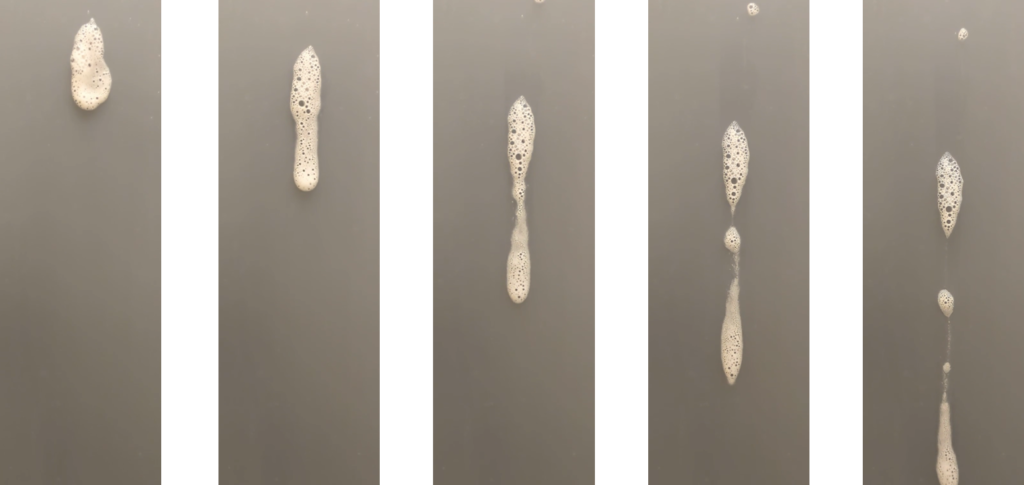Summary
Foam is a state in which a large number of bubbles are densely packed together to form a cluster. Foam is present in all aspects of daily life, such as detergent foam, beer foam, and firefighting foam. Because foam is essential to our daily lives, many CG scenes of foam have been produced in many visual works.

Foam in the real world
Thus, foam is very important in computer graphics, and many visual simulation methods for foam have been proposed. On the other hand, most of the previous research has focused on foam floating on the surface of water, and little consideration has been given to the behavior of foam adhering to a wall surface.
When foam adheres to a wall surface, it does not flow down immediately, but may remain on the wall surface for some time. In this case, the foam behaves either fluidly or solidly, depending on the volume fraction of the contained liquid (liquid fraction). One of the most important phenomena of foam is called drainage, in which the liquid flows downward under gravity. When the distribution of the liquid fraction in foam changes from moment to moment due to drainage, the behavior of foam changes, such as the separation of the foam into two pieces.
In this study, we propose a visual simulation method for foam that takes drainage into account. We approximate drainage by calculating the liquid flow in and out between bubbles, and change the force on the bubbles according to the liquid fraction to realize changes in behavior in response to changes in the liquid fraction distribution in the foam.

Results of visual simulation of foam with drainage.
Members
| Name | Affiliation | Web site |
|---|---|---|
| Keio University |
Publications
Presentation
Refereed
- Hiroto Tahara and Issei Fujishiro: “Consideration of drainage in simulation of foam flow on wall surface,” in Proceedings of Visual Computing 2024, pp. 7:1―7:5, Toyo University, Tokyo, September 10-12, 2024(in Japanese).
Unrefereed
- Hiroto Tahara and Issei Fujishiro: “Reproduction of drainage effect in foam flow on wall surface,” in Proceedings of the 86th National Convention of International Processing Society of Japan, Vol. 2, pp. 231―232 (6P-06), The University of Kanagawa, online & onsite hybrid, March 15―17, 2024(in Japanese).
Grants
 Grant-in-Aid for Scientific Research (A): 21H04916 (2021-)
Grant-in-Aid for Scientific Research (A): 21H04916 (2021-)